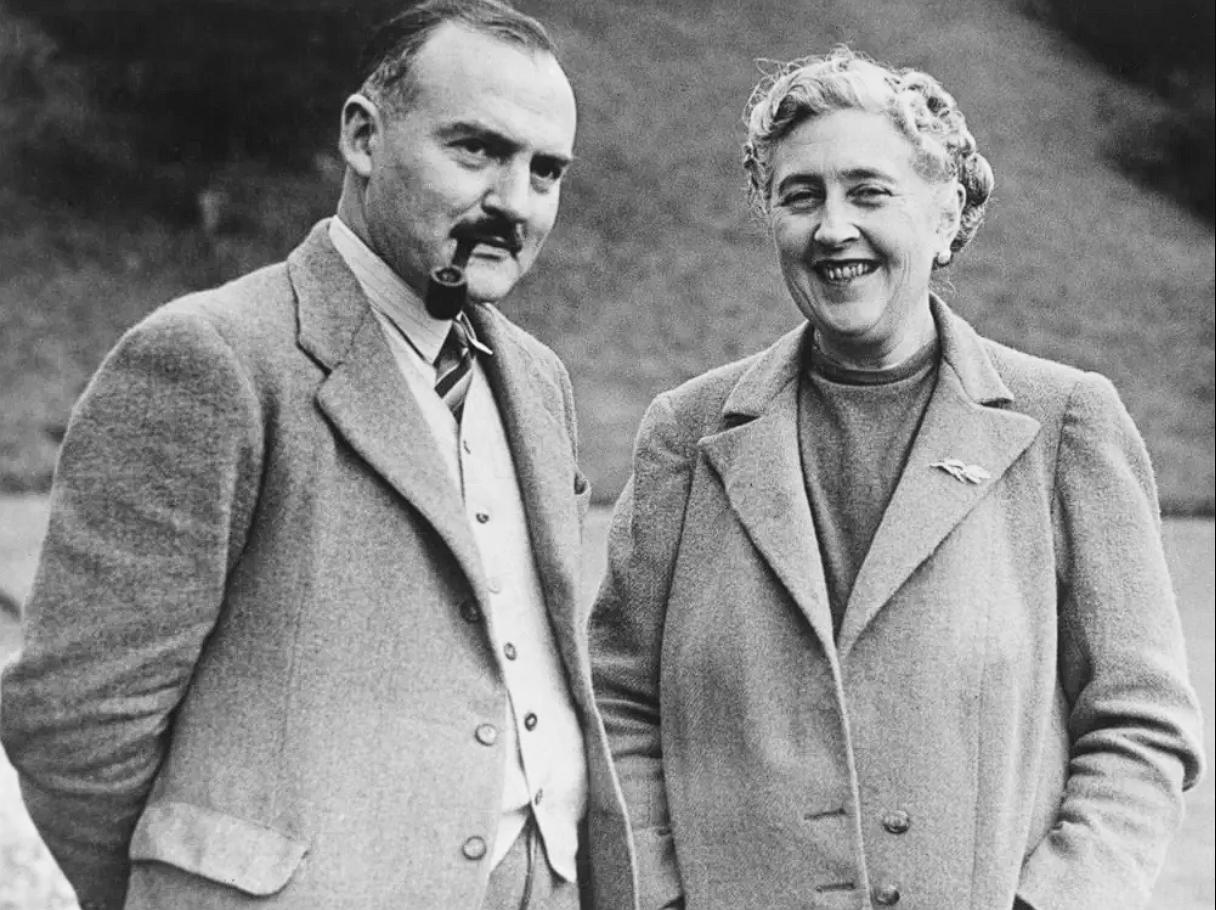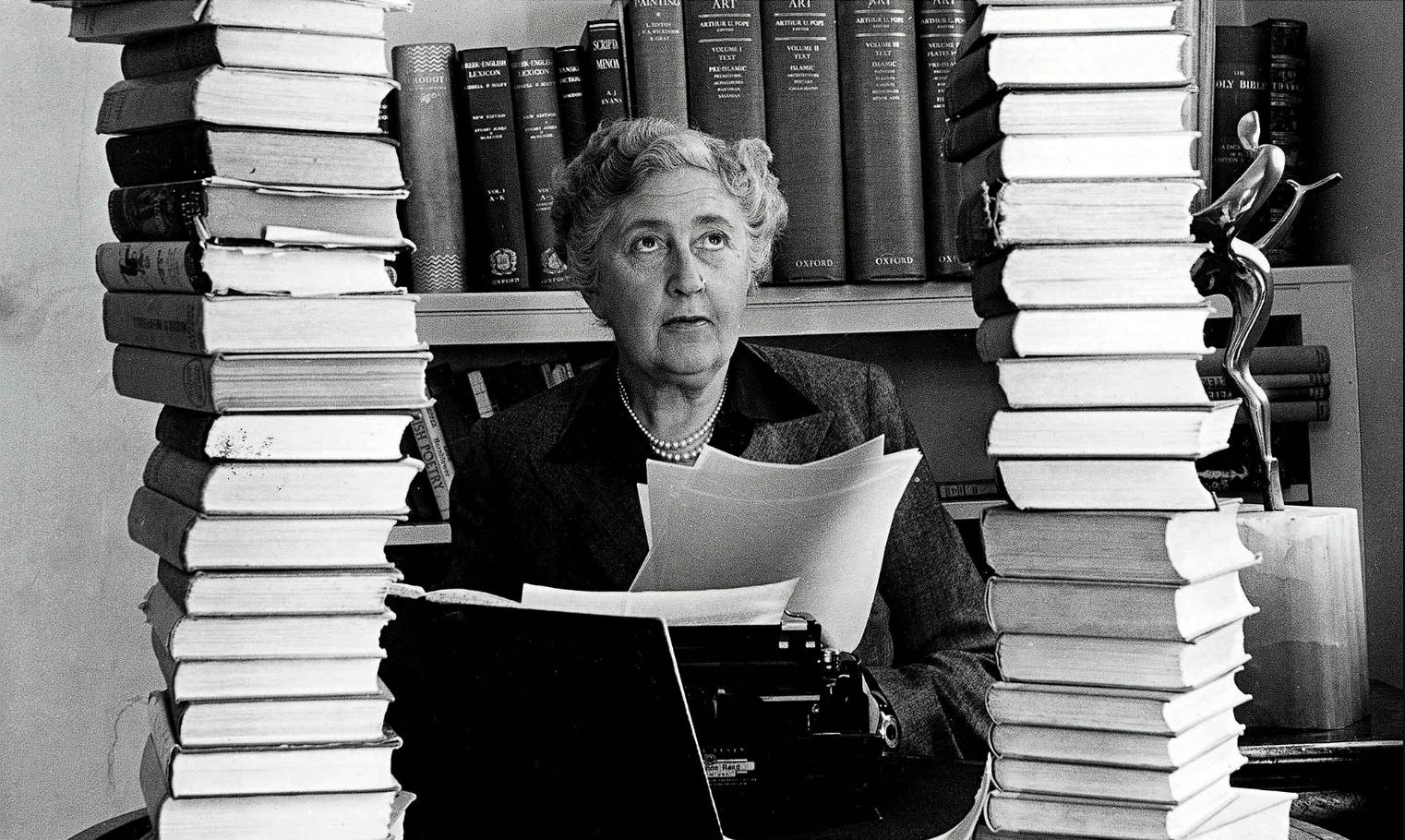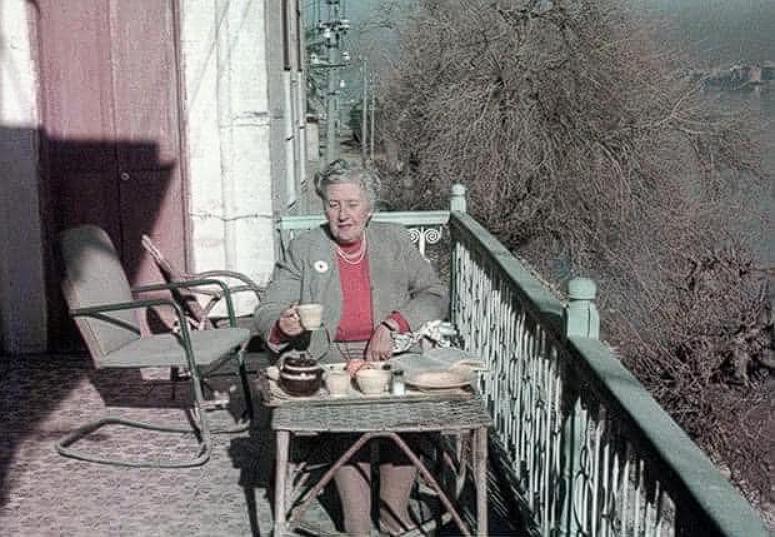A photograph of Agatha Christie enjoying tea on the balcony of the British School of Archaeology in Baghdad during the 1950s encapsulates a fascinating chapter in her life. Accompanied by her archaeologist husband, Sir Max Mallowan, Christie’s time in the Middle East deeply influenced her writing, blending real-life experiences with the mystery and intrigue that defined her literary legacy.
Agatha Christie’s Journey to the Middle East
Christie’s journey to the Middle East was a transformative period in her life, marked by personal change and a deep connection to archaeology.
Solo World Adventure
Following her divorce, Christie embarked on a solo world adventure, seeking new experiences and a fresh start.
- Post-Divorce Journey:
- After 14 years of marriage, Christie’s solo journey was a significant departure, reflecting her desire for independence and exploration.
- She traveled alone after a divorce.
- Orient Express to Baghdad:
- Her journey began with a trip to Baghdad on the Orient Express, a romantic and adventurous mode of travel that would later inspire one of her most famous novels.
- She traveled by the Orient Express.
- Seeking New Experiences:
- Christie’s decision to travel alone reflected her adventurous spirit and her desire to experience different cultures and environments.
- She wanted to see the world.
Meeting Max Mallowan
Christie’s visit to the ruins of Ur led to a life-changing encounter with archaeologist Max Mallowan, who would become her second husband.

- Visit to the Ruins of Ur:
- Her visit to the archaeological site of Ur sparked her interest in archaeology and introduced her to the world of excavations.
- She visited ancient ruins.
- Encounter with Max Mallowan:
- Meeting Max Mallowan, a renowned archaeologist, marked the beginning of a personal and professional partnership that would shape her life.
- She met her future husband.
- Marriage in 1930:
- Their marriage in 1930 solidified their bond and integrated archaeology into Christie’s life, providing her with a unique perspective and wealth of experiences.
- They got married.
Archaeology as Part of Her Life
From then on, archaeology became a significant part of Christie’s life, with her accompanying Mallowan on numerous expeditions.
- Accompanying Expeditions:
- Christie regularly accompanied Mallowan on archaeological expeditions, immersing herself in the world of ancient Mesopotamian artifacts and discoveries.
- She went on expeditions with her husband.
- Uncovering Ancient Artifacts:
- Her involvement in excavations allowed her to witness the uncovering of ancient artifacts firsthand, providing her with rich material for her writing.
- She saw ancient artifacts.
- Life at Excavation Sites:
- Living at excavation sites provided her with unique insights into the daily life and challenges of archaeologists, enriching her understanding of the region.
- She lived at dig sites.
The Middle East as Inspiration for Her Writing
Christie’s time in the Middle East profoundly influenced her writing, providing settings and inspiration for some of her most famous works.
Murder on the Orient Express
Her journey back from one of Mallowan’s excavations, when her train was stranded for 24 hours, inspired the plot of “Murder on the Orient Express.”

- Train Stranded by Weather:
- The experience of being stranded on a train due to bad weather provided the perfect setting for a mystery novel, with a confined space and a group of diverse characters.
- Her train was stuck.
- Inspiration for the Plot:
- The incident sparked her imagination, leading to the creation of one of her most iconic stories, featuring Hercule Poirot and a complex murder mystery.
- It inspired a famous book.
- Blending Real-Life Experience:
- The novel blends her real-life experience of traveling on the Orient Express with her talent for crafting intricate plots and compelling characters.
- The book used her real life experience.
Murder in Mesopotamia
Christie’s direct experience of archaeological excavations provided the backdrop for “Murder in Mesopotamia,” a novel set at an archaeological dig.
- Archaeological Setting:
- The novel’s setting at an archaeological dig allowed Christie to draw on her firsthand knowledge of the environment and the people involved.
- The book is set at a dig site.
- Authentic Details:
- She incorporated authentic details about archaeological work, adding realism and depth to the story.
- She added real details.
- Intrigue and Mystery:
- The novel combines the intrigue of an archaeological discovery with the mystery of a murder, creating a compelling narrative.
- The book combines intrigue and mystery.
They Came to Baghdad
The region also served as the backdrop for “They Came to Baghdad,” a novel that blends espionage with adventure in the Middle East.

- Espionage and Adventure:
- The novel features espionage and adventure, reflecting the political tensions and intrigue of the region during the mid-20th century.
- The book is about spies.
- Baghdad Setting:
- The setting in Baghdad provided a rich and exotic backdrop for the story, adding to its atmosphere and intrigue.
- The book is set in Baghdad.
- Blending Real and Fictional Elements:
- Christie skillfully blended real-life observations with fictional elements, creating a captivating story that reflects her understanding of the region.
- She mixed real and fictional elements.
The Enduring Influence of the Middle East
Agatha Christie’s time in the Middle East left an indelible mark on her writing and her life, contributing to her enduring legacy as a master of mystery.
Personal and Professional Growth
Her experiences in the Middle East contributed to her personal and professional growth, broadening her horizons and enriching her writing.

- Broadening Horizons:
- Traveling and living in the Middle East broadened her horizons, exposing her to different cultures and perspectives.
- She saw new places.
- Enriching Her Writing:
- Her experiences provided her with a wealth of material for her novels, adding depth and authenticity to her stories.
- Her experiences made her writing better.
- Unique Perspective:
- Her unique perspective, combining her talent for storytelling with her knowledge of archaeology, set her apart from other mystery writers.
- She had a unique perspective.
Blending Fact and Fiction
Christie’s ability to blend real-life experiences with fictional elements created compelling narratives that resonated with readers.
- Authentic Settings:
- Her use of authentic settings and details added realism to her stories, making them more engaging and believable.
- Her settings were real.
- Intricate Plots:
- Her intricate plots and well-developed characters, combined with her knowledge of the region, created memorable and enduring mysteries.
- She had good plots.
- Enduring Appeal:
- The enduring appeal of her novels lies in their ability to transport readers to exotic locations and immerse them in intriguing mysteries.
- Her books are still popular.
Cultural Legacy
Agatha Christie’s time in the Middle East contributed to her cultural legacy, highlighting the connection between her life and her work.
- Archaeological Influence:
- Her involvement in archaeology added a unique dimension to her writing, reflecting her diverse interests and experiences.
- Archaeology influenced her writing.
- Literary Contributions:
- Her literary contributions, inspired by her time in the Middle East, continue to captivate readers and influence mystery writers.
- Her books are still enjoyed.
- Historical Context:
- Her novels provide a glimpse into the historical context of the Middle East during the mid-20th century, adding to their cultural and historical significance.
- Her books provide historical context.
Agatha Christie’s time in the Middle East was a pivotal chapter in her life, providing her with rich experiences and inspiration for her writing. Her ability to blend real-life observations with fictional elements created enduring mysteries that continue to captivate readers, solidifying her legacy as a master storyteller.
